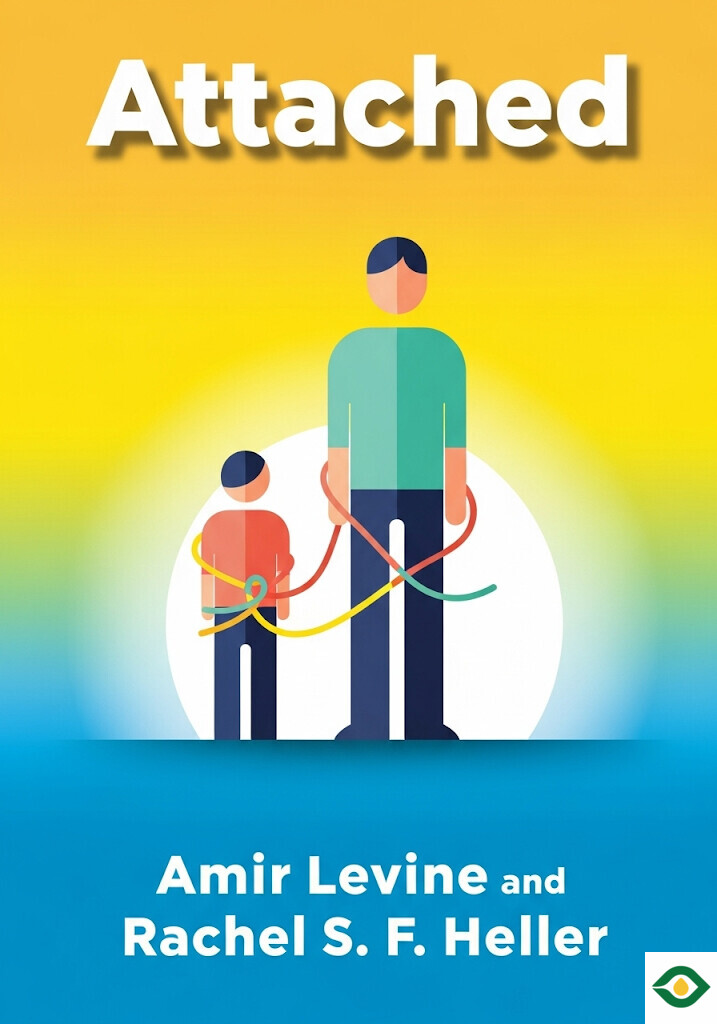Description
Why do some people feel anxious when their partner doesn’t reply quickly, while others panic at too much closeness? Why do certain couples seem naturally in sync, while others constantly clash even when love is strong? The answers often lie in the science of attachment—the deep bonds that shape the way we connect, love, and stay together.
Attachment is one of the most powerful human needs. It is not just a romantic idea but a biological force. From birth, humans are wired to seek safety, comfort, and closeness with others. A baby cries for its mother not because it has learned that love is nice, but because attachment is built into our genes. This drive has been essential for survival since ancient times, when close bonds helped protect us from dangers and gave us better chances to thrive.
As adults, attachment plays out in romantic relationships. The need for closeness does not disappear; it simply changes form. Holding a partner’s hand during a stressful moment can calm the brain and lower anxiety. Studies even show that when people in strong relationships face stressful situations, they cope better if their partner is nearby. On the other hand, being in an unhappy or unstable relationship can damage health, raising blood pressure and even increasing the risk of long-term illness. Love can heal, but it can also harm if the connection is unhealthy.
Even though everyone has the same basic need for attachment, people differ in how they experience it. Psychologists have found that there are three main attachment styles: anxious, avoidant, and secure. These patterns strongly influence how relationships develop, succeed, or break apart.
Anxious individuals crave closeness and constant reassurance. They often fear being abandoned or unloved. For example, if their partner ignores a phone call, they may quickly assume the worst—that love has faded or something is wrong. They take small events very personally and need frequent reminders that they are valued. These people feel deeply, but their worries can overwhelm them and strain their relationships. The best partners for them are those who can offer steady comfort and reassurance without judgment.
Avoidant individuals, in contrast, fear too much closeness. They value independence and often feel trapped when someone depends on them. They may hold back from sharing emotions or keep partners at a distance, fearing that intimacy means losing freedom. Avoidants often search endlessly for “the perfect one,” criticizing small flaws in their partners as excuses to pull away. While they still need love, they have trouble expressing it openly. For them, learning to see their partner more positively and practicing empathy can make a big difference.
Secure individuals are the balance between the two. They are comfortable with intimacy but also respect independence. They trust their partners, handle conflicts calmly, and read emotional signals with sensitivity. Being in a relationship with a secure person usually leads to stability and satisfaction. In fact, research shows that just one secure partner can transform the quality of a relationship, even if the other partner struggles with anxiety or avoidance.
But attachment styles are not fixed forever. They form through early experiences with parents or caregivers, but later relationships can reshape them. A child who grew up insecure can still learn to trust if they meet a secure and supportive partner as an adult. Likewise, painful breakups can turn secure individuals into more anxious or avoidant ones. This means that people are not trapped by their past—they can grow, heal, and change their relationship patterns.
Understanding attachment styles also helps us see why some relationships feel like roller coasters. When an anxious person pairs with an avoidant one, their needs often clash. The anxious partner wants closeness, while the avoidant one pulls away. This cycle leads to repeated misunderstandings, stress, and heartbreak. On the other hand, anxious individuals paired with secure partners usually find peace, while avoidant individuals can improve if they choose secure partners who remain patient and steady.
Communication is the key to making relationships work, no matter the attachment style. Many people try to hide their needs out of fear of looking weak, but expressing those needs clearly is far more effective. For instance, if someone wants more affection, it is better to say, “I feel loved when you hold my hand,” rather than remain silent and grow resentful. Specific, honest, and blame-free communication creates understanding instead of distance.
Conflict is natural in any relationship, but how couples handle it matters more than how often it happens. Healthy conflict focuses on specific issues rather than general attacks. For example, arguing about who should do the grocery shopping should not turn into an argument about every past mistake. Couples who look for compromises—like planning vacations that include both rest and adventure—tend to grow stronger through disagreements. Fighting fairly can even deepen attachment, because it shows that both partners care enough to work through problems together.
Still, not every relationship can be saved by communication and compromise. If two people’s core needs are completely mismatched, it may be healthier to move on. Someone who longs for closeness may never be happy with someone who constantly avoids it. In such cases, recognizing incompatibility early prevents years of frustration. The secret to lasting love is not simply passion or “true love” as portrayed in movies—it is finding a partner whose attachment style and emotional needs match your own.
To create a fulfilling relationship, it is important to first understand yourself. Knowing your own attachment style helps you identify what you need from a partner and how you tend to behave in love. If you are anxious, you may need more reassurance. If you are avoidant, you may need to practice opening up. If you are secure, you can use your stability to support both yourself and your partner. Self-awareness makes it easier to find and maintain love that truly works.
Relationships will never be perfect, but they can be healthy, supportive, and deeply rewarding. Love is not about ignoring differences or pretending problems don’t exist. It is about recognizing needs, communicating openly, and choosing partners who bring out the best in us. When we understand attachment styles, we gain a clearer map of how love works—why some connections succeed, why others fail, and how we can shape our own story of love.
The lasting lesson is this: love is not just a mystery of the heart but also a science of human bonds. By learning how attachment shapes behavior, we can approach relationships with more wisdom, patience, and hope. And with that understanding, building a happy, long-lasting relationship becomes not just possible, but much more likely.





